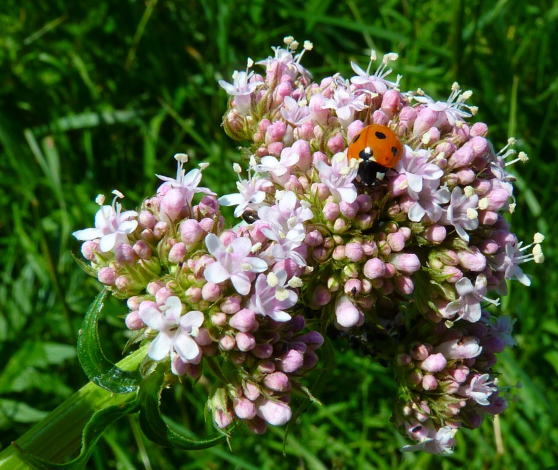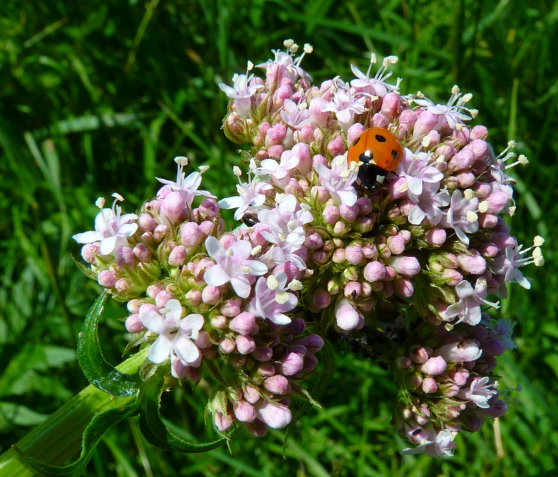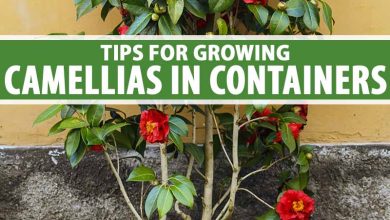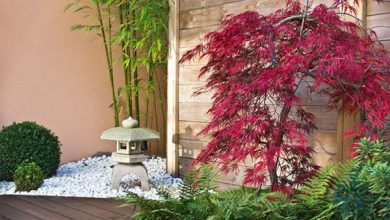How to grow Valerian in the garden or in pots

Valerian , Valeriana officinalis , or also called cat grass , is a perennial medicinal and aromatic plant that belongs to the botanical family of Valerianaceae . It is a herbaceous type plant, with petioled leaves that can have small pinkish or white flowers.
This medicinal plant is great to grow both in the garden or in pots and cultivation tables in patios and terraces, so go ahead and plant it to take advantage of the properties and benefits of valerian , which we will talk about below.
I also recommend growing other medicinal and aromatic plants such as basil , oregano or rosemary , very commonly used in cooking recipes and in home remedies.
How to grow Valerian in the garden or in pots
 Sowing and multiplication
Sowing and multiplication
From March we are preparing the protected seedbeds. Leave the seeds in a jar with water the night before so that they germinate better.
Another way to reproduce or multiply valerian is by dividing the mat of an adult plant, it is undoubtedly the easiest way to obtain more valerian plants. We will do it with plants that are more than one year old and preferably in autumn.
Transplant
After approximately three weeks we can begin to transplant the valerian seedlings to their final location, leaving a minimum of 30 cm between plant and plant. If you will be growing valerian in pots or cultivation tables, make sure that they are at least 40 cm deep to allow the development of the roots, which is precisely the part that takes advantage of the medicinal properties of valerian .
Substratum
Ideally, valerian does best in soils or substrates with a neutral pH, that are loose, rich in organic matter, that are deep, and that are well drained and aerated. We will avoid clay and caked soils.
Temperature
Temperate climates favor its growth. In cold climates they must be protected, because, although they can withstand occasional frosts, the damage could seriously harm the plant.
Light
We can sow it in full sun and also in semi-shade.
Irrigation
Keep watering regular because valerian doesn’t do well with drought or water stress. This plant grows wild in humid areas, so we must maintain the substrate with a certain degree of constant humidity.
Pruning
This plant can reach a meter and a half in height, so you should prune it in spring and / or autumn to limit its growth to the height and width, especially if you are going to grow valerian in pots or on a cultivation table. To improve the quality of the roots, we will cut the flowers a couple of months before harvesting the valerian root.
Plagues and diseases
During the cultivation of valerian, some aphids, wireworms and diseases caused by fungi can appear. We can prevent and combat them in an ecological way with these tips .
Harvest
From the second year we can begin to harvest the rhizome and roots of the plant to use it in home remedies. Preferably we will harvest the roots of the valerian in autumn or spring.
Medicinal properties and uses of valerian
The root and rhizome are mainly used for medicinal purposes.
It is a medicinal plant highly appreciated for its action on the central nervous system.
It has a sedative and calming effect, relieves headaches, helps in cases of nervous exhaustion and improves cases of insomnia.
Read more about the medicinal properties and uses of valerian .




![Photo of Elaeagnus: [Characteristics, Care, Planting, Pruning and Problems]](https://www.complete-gardening.com/wp-content/uploads/2022/08/elaeagnus-characteristics-care-planting-pruning-and-problems-390x220.jpg)